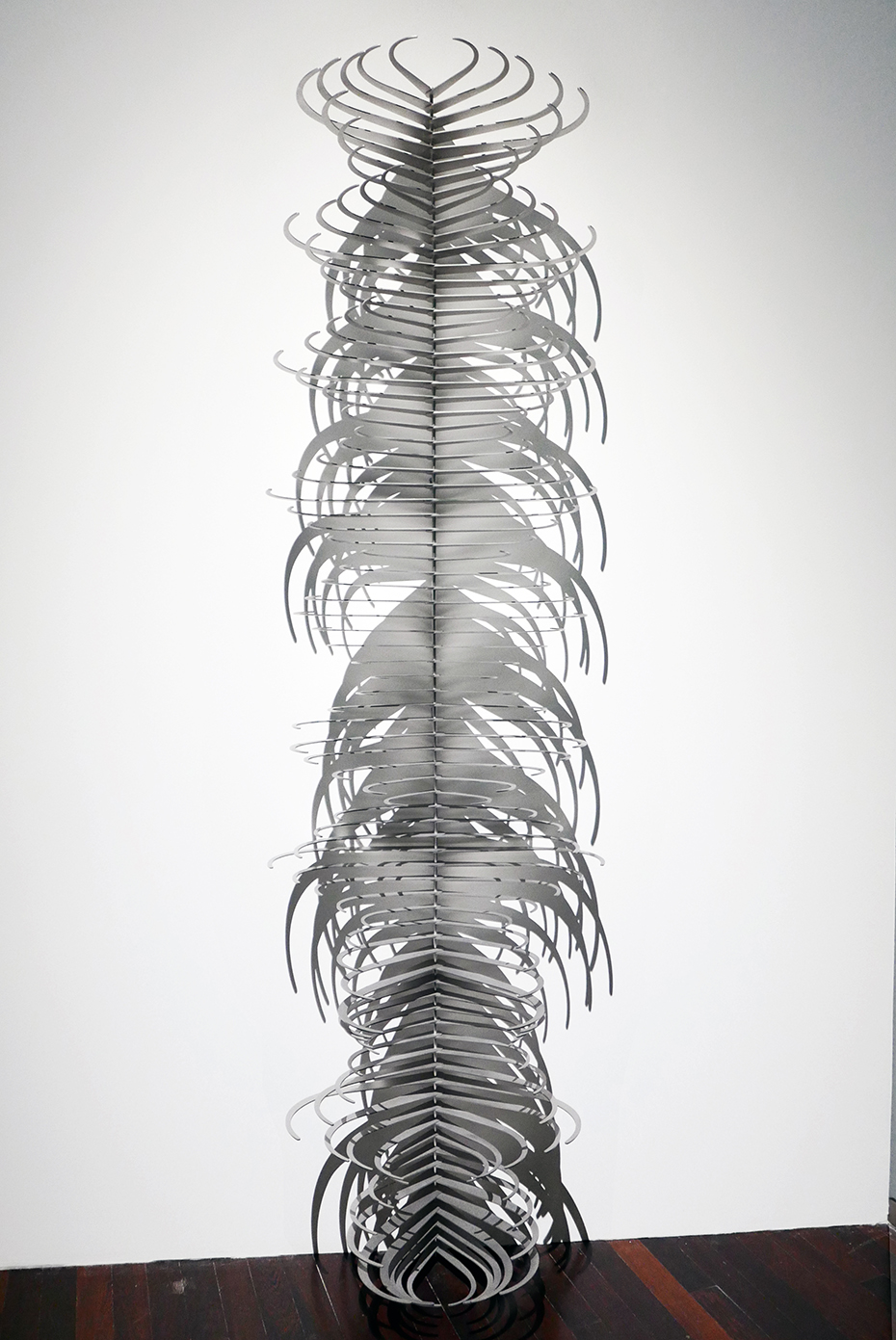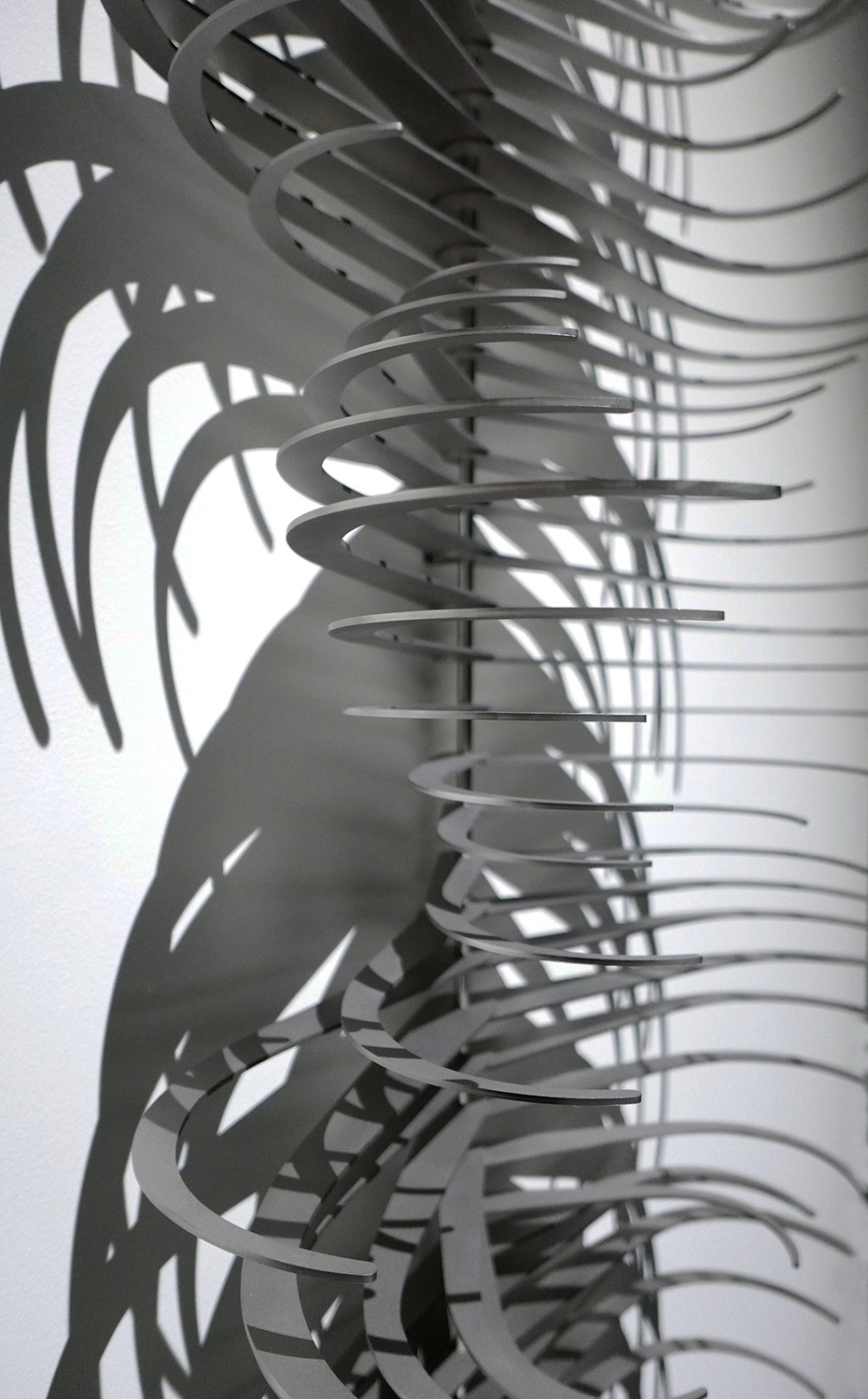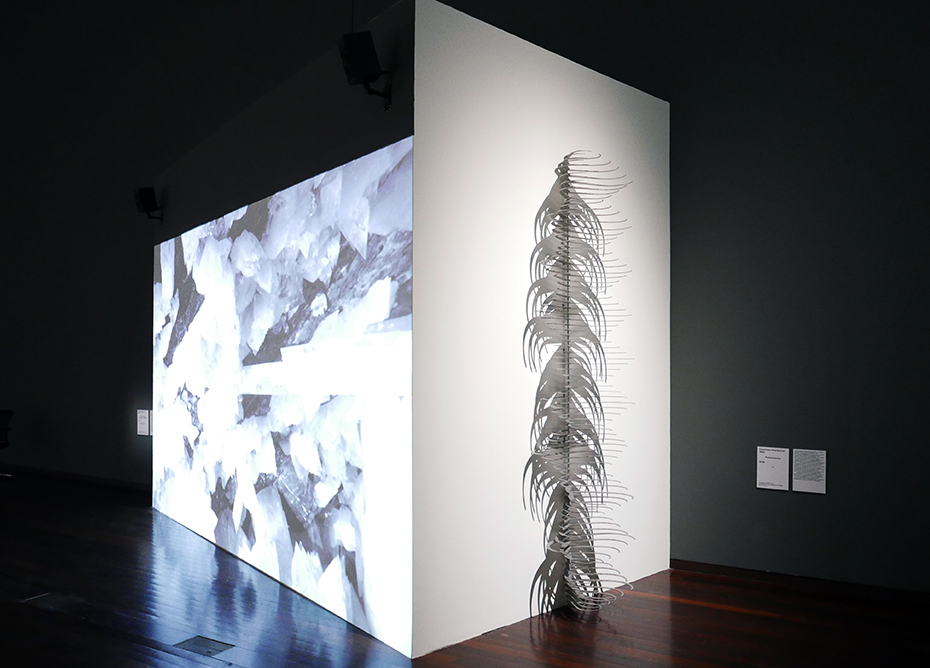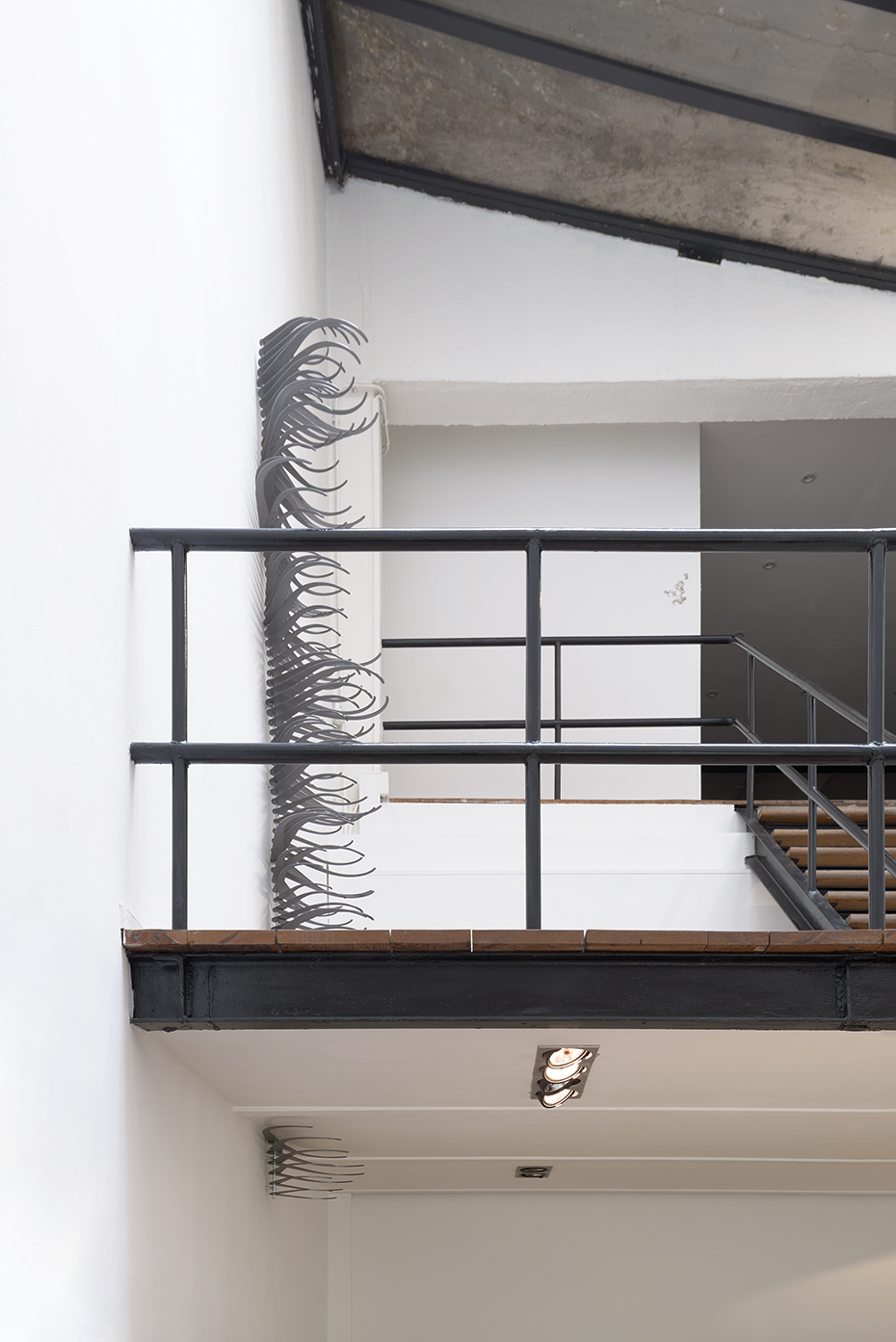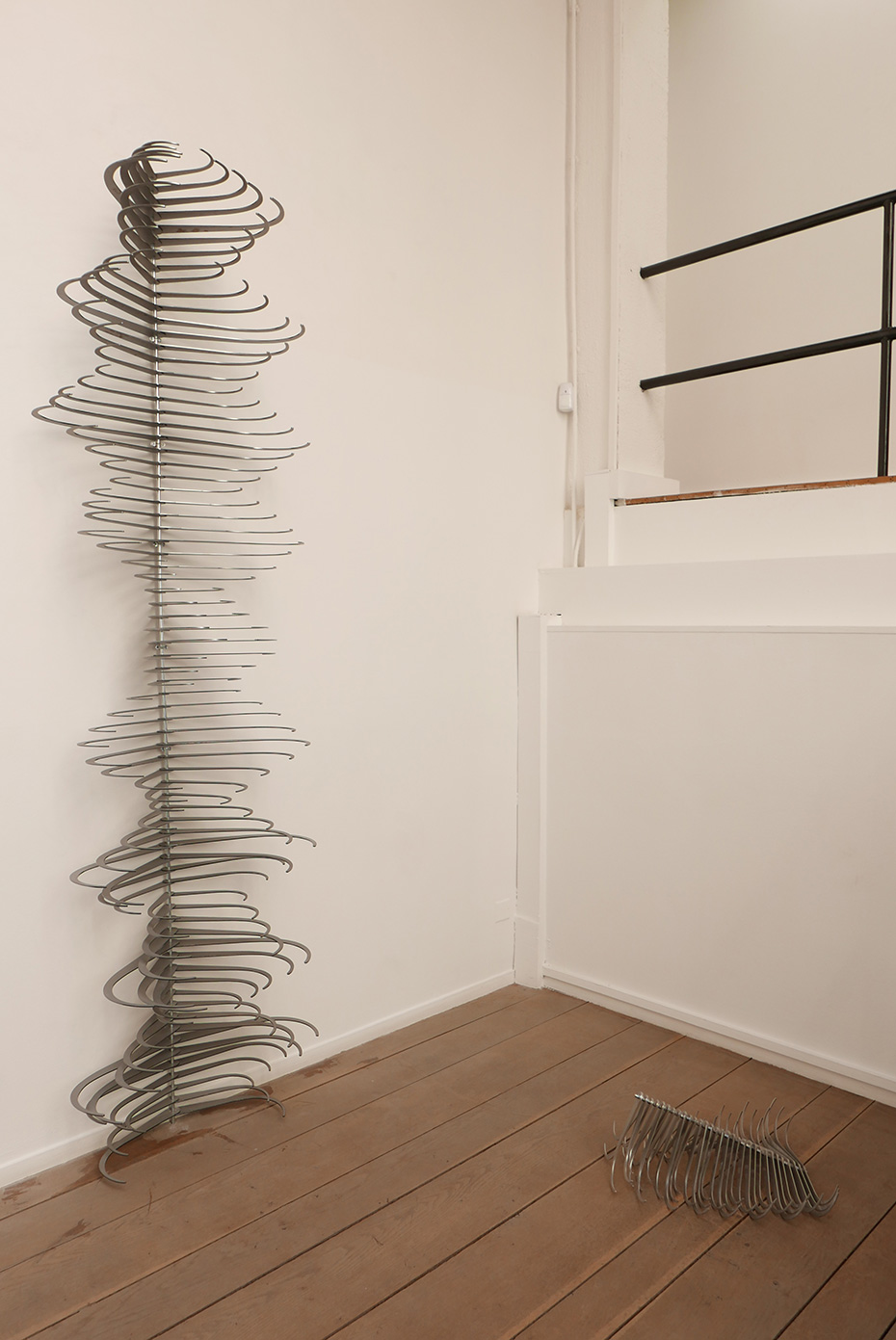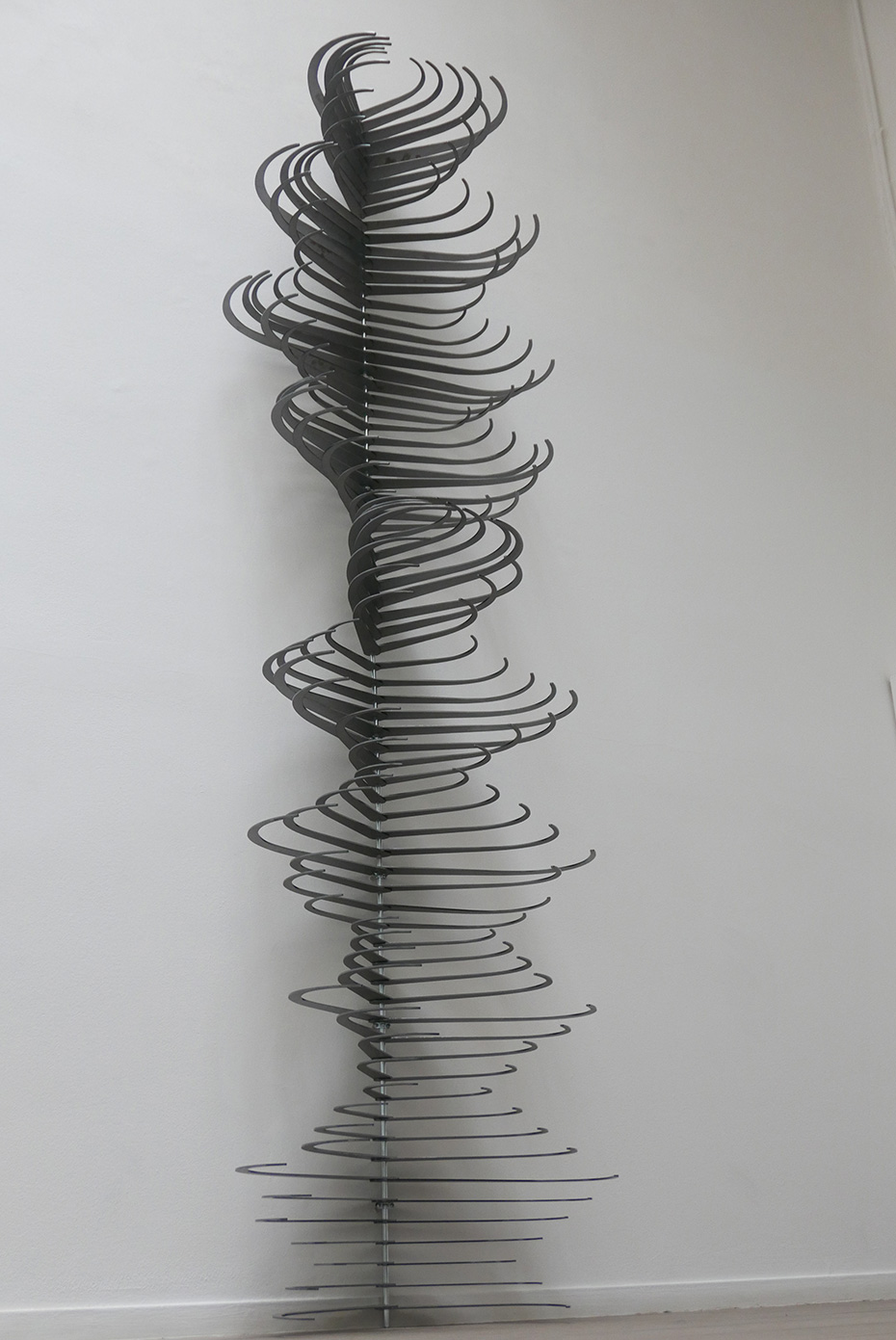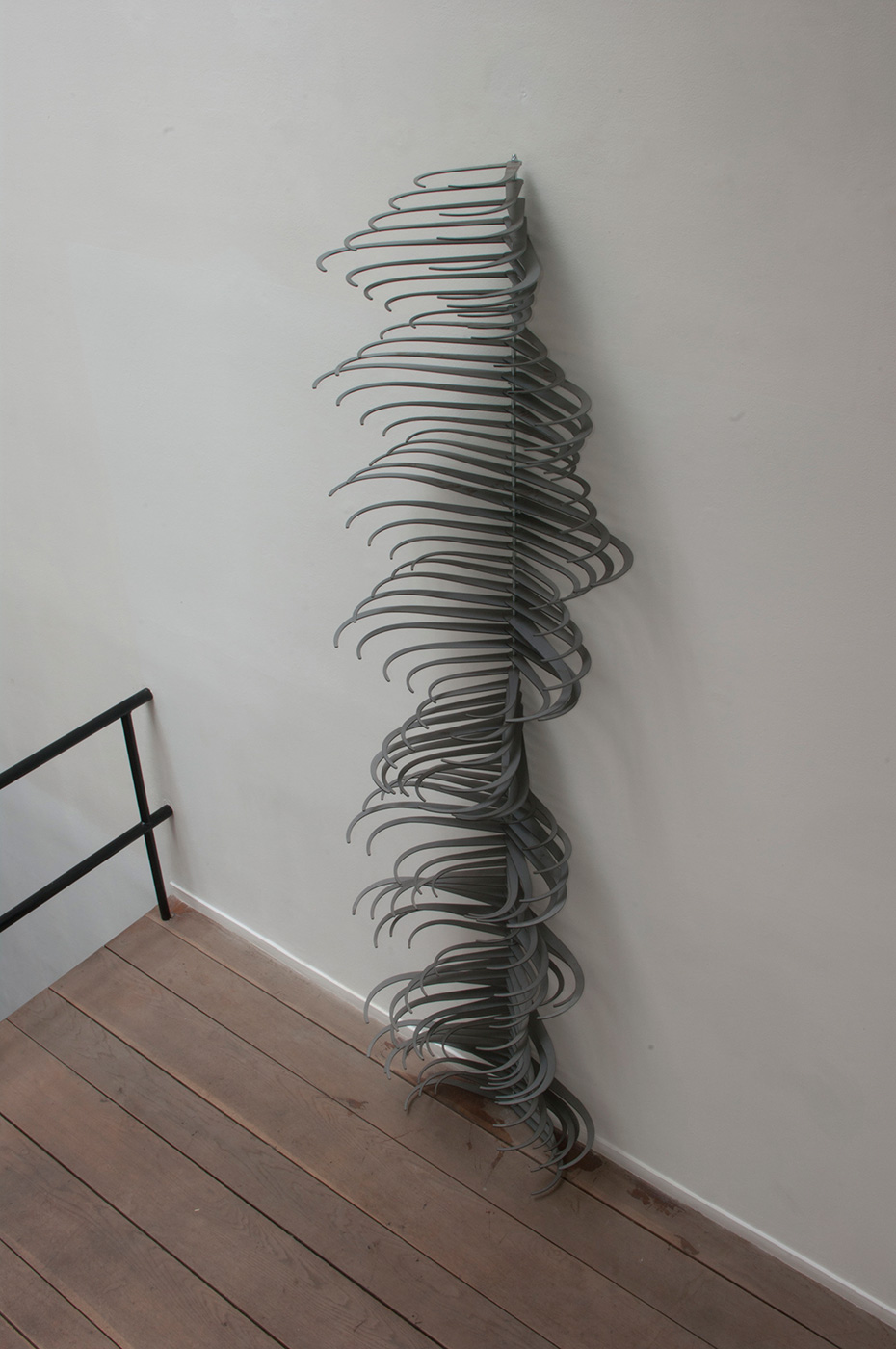Collection MAC VAL
L’oeuvre de Charlotte Charbonnel se caractérise par l’observation minutieuse des phénomènes physiques, terrestres et naturels.
Paleomancie rappelle le squelette monumental constitué de compas métalliques, de tailles et ouvertures variables, réalisés sur mesure. Cette pièce est emblématique de la fascination que Charlotte Charbonnel nourrit pour les instruments de mesure. Les compas d’épaisseur qui la constituent étaient couramment employés comme instruments cranio-graphiques à partir de la fin du XIXème siècle.
Partant d’inspections crâniennes, médecins et chercheurs occidentaux procédaient à une hiérarchisation des facultés intellectuelles et morales des individus et donc du vivant.
Le titre Paleomancie, néologisme inventé par l’artiste, se compose de la racine paléo, renvoyant au passé, et de mancie, en référence aux arts divinatoires. Il manifeste ainsi du contraste entre l’utilité supposée des pièces métalliques et leur caractère symbolique.
Texte de l’exposition « le Vent se lève » de la collection MAC VAL
MAC VAL Collection
Charlotte Charbonnel’s work is characterized by her meticulous observation of physical, terrestrial and natural phenomena.
Paleomancie is reminiscent of the monumental skeleton made up of metal compasses, of varying sizes and openings, made to measure. This piece is emblematic of Charlotte Charbonnel’s fascination with measuring instruments. The thick compasses that make it up were commonly used as cranio-graphic instruments from the end of the 19th century onwards.
Based on cranial inspections, Western doctors and researchers proceeded to a hierarchy of the intellectual and moral faculties of individuals and therefore of the living.
The title Paleomancie, a neologism invented by the artist, is composed of the root paleo, referring to the past, and mancia, in reference to the divinatory arts. It thus manifests the contrast between the supposed usefulness of metal pieces and their symbolic character.
exhibition text from « Le vent se lève », MAC VAL collection
